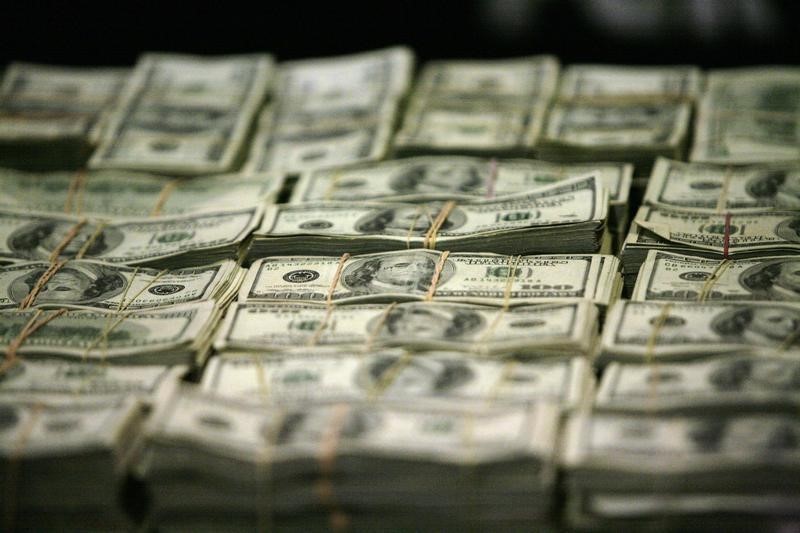Investing.com - The dollar remained broadly lower against the other major currencies on Tuesday, as the release of disappointing U.S. housing sector data continued to weigh on demand for the greenback.
The U.S. Census Bureau said that building permits fell 7.7% in March to 1.086 million units, after a 2.2% drop the previous month to 1.177 million units. Analysts had expected building permits to rise to 1.200 units last month.
U.S. housing starts declined by 8.8% in March to 1.089 million units after increasing by 6.9% to 1.194 million units in February, whose figure was revised from a previously estimated 1.178 million units.
Analysts had expected housing starts to hit 1.170 million units in March.
USD/JPY gained 0.54% to 109.40.
The yen came under pressure after Japan’s Finance Minister Taro Aso said Tuesday he would take “various measures” against excessive currency moves and added that rapid currency moves are unwelcome.
Meanwhile, uncertainty over future U.S. rate hikes persisted after New York Federal Reserve President William Dudley warned on Monday that the U.S. central bank is likely to stick to a cautious approach on tightening monetary policy.
Boston Fed President Eric Rosengren said that rates could increase more rapidly than investors currently expect.
EUR/USD advanced 0.46% to trade at 1.1365.
Earlier Tuesday, data showed that the ZEW economic sentiment index for Germany rose to 11.2 in April from March’s reading of 4.3, beating forecast of 8.0.
Meanwhile, the dollar was lower against the pound, with GBP/USD up 0.78% at 1.4391 and with USD/CHF sliding 0.34% to 0.9609.
The Australian and New Zealand dollars were stronger, with AUD/USD up 0.66% at 0.7799 and with NZD/USD rallying 1.08% to 0.7025.
The minutes of the Reserve Bank of Australia’s April meeting revealed that the central bank is in no hurry to cut interest rates and said that it will continue to watch employment trends.
The RBA also mentionned its concerns regarding the strength of the Australian dollar, saying "members noted that an appreciating exchange rate could complicate progress in activity rebalancing towards the non-mining sectors of the economy."
Elsewhere, USD/CAD declined 0.86% to 1.2676.
The commodity currencies were boosted as oil prices moved higher on Tuesday, as an oil worker strike in Kuwait cut the country’s crude production nearly in half.
Crude had tumbled the previous day after a meeting of the world’s major oil producers in Doha, Qatar on Sunday ended without an agreement on curbing production intended to prop up prices.
The U.S. dollar index, which measures the greenback’s strength against a trade-weighted basket of six major currencies, was down 0.39% at 94.08, the lowest since April 13.
